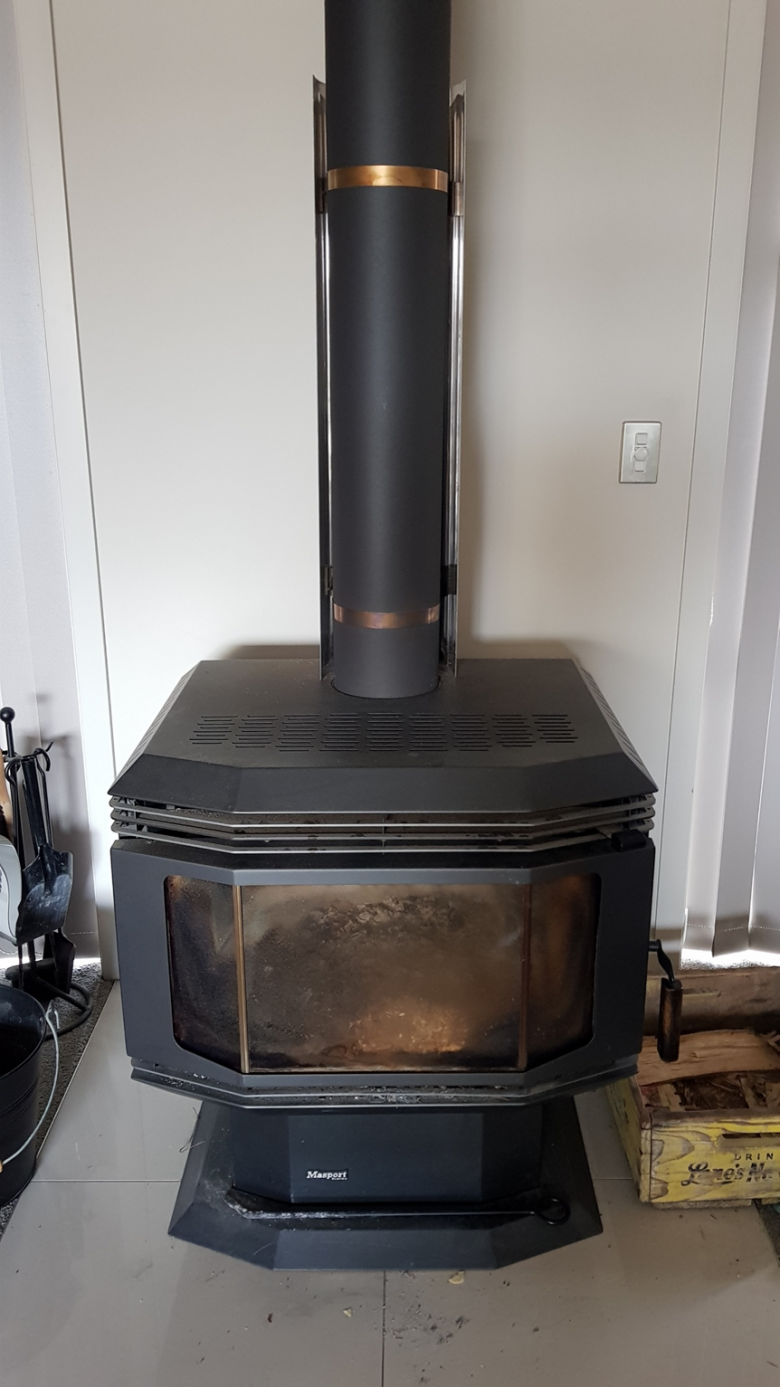I often get asked about whether using wood-burners for interior heating contributes to climate change. For the purposes of this article, let’s set aside the effects that the use of wood-burners have on outdoor air quality. Smoke from using wood-burners contributes to poor air quality; you only need to walk around Alexandra on a cold winter’s night with a strong inversion layer to notice that. But that’s mostly a different issue to climate change – I say ‘mostly’ because the aerosols (smoke) from wood-burners, if anything, make a small contribution to cooling the climate by reflecting solar radiation back to space before it reaches the ground.
But what about all of that carbon dioxide (CO2) coming out of the top of the flue when you burn the wood? Let’s go back to the five commandments of climate change that I published in my December 2021 piece. I know you’ve all memorised them but if you need a refresher, here they are:
- Don’t take carbon atoms out of the ground and put them into the atmosphere.
- Do like your mum said – if you take carbon atoms out of the ground, be sure to put them back.
- Don’t put gases into the atmosphere that are good at absorbing infrared radiation.
- Don’t convert some gas in the atmosphere to a different gas that is a stronger greenhouse gas.
- Don’t engage in activities that would cause others to break commandments one to four.
Well, you might be fracturing the third commandment because the carbon that is in the wood combines with the oxygen in the air inside the wood-burner to make CO2. This process will be known to the chemists among you as ‘oxidation’ and to normal people as ‘burning’ (sorry, making fun of chemists is compulsory for physicists). The resultant CO2 gets carried up the flue and into the outside air. But those carbon atoms didn’t come out of the ground. They were in the air just a couple of decades earlier before being taken up by the tree to grow the wood. So, the carbon that was in the air just a couple of decades ago is just being put back, right? Right. This is indeed the case. In fact, the news may be better still. The carbon in your firewood, while stacked neatly and dry in your woodshed, isn’t in the atmosphere in the form of CO2 (where it would be absorbing all of that outgoing longwave radiation which warms the climate) – better to have the carbon in your woodshed than in the atmosphere. Of course, all of these arguments assume that for every tree cut down for firewood another is planted and that we’re not burning wood faster than it grows back. So, if you’re using a wood-burner to heat your house, or tourism facility, then there is nothing more that you need to do in this regard, right? Well, not quite…
As alluded to above, the goal is to stockpile wood and burn less of it where possible – not only saving money, but also slowing the release of the trapped carbon back into the atmosphere (as well as all of that particulate pollution). However, I burn far more wood than is necessary, and you probably do too. Every time I look at my wood-burner (see photo) I get annoyed because it is less efficient than it could be. Here is my list of complaints (read at your peril – it may make you annoyed with your wood-burner too):
1. The air needed to burn the wood is drawn from inside the house. In this regard, the wood-burner acts like a machine that draws air from inside the house, massively warms it up, and then shoots it up the flue and into the outside air – hopefully with a little of the heat being transferred, either radiatively or convectively, into the room where the wood-burner sits. What is the effect of this? Well, it sucks the air out of your house and depressurises your house. This causes replacement air to be sucked in from the outside, i.e., cold, polluted air is drawn into the house. It would make far more sense if the wood-burner had a little duct going into the roof cavity or, better still, going outside the house, that would draw the air into the combustion box where the wood is burned. That would stop the air from inside the house being sucked into the burner.
2. The flue on my wood-burner is a round pipe. This is the very worst possible shape to make a flue. They make fin heaters with fins to maximise the contact of the air in the room with the hot fins. You want as much metal as possible to be in contact with the air. A cylindrical flue minimises the surface area of the metal in contact with the air. Let’s have fun with some maths. The cross-sectional area of the flue is given by πr2 (remember all of that pi r-squared stuff from school – here you get to use it) where r is the radius of the flue. The circumference is given by 2π So, the ratio of the circumference to the area (the number we want to make as big as possible) is 2πr/πr2 which is 2/r. Let’s use a concrete example of r=10 cm and let’s call our ratio G. For a cylindrical flue the area would be 314.16 cm2 and G would be 0.2. What if we had a square flue with the same area? Then G becomes 0.226. OK, a little better. But let’s think about having four separated square flues, each with an area of 78.54 cm2 (so totalling 314.16 cm2). G then becomes 0.451. Now we’re cooking! Just by replacing my cylindrical flue with four separated square flues, I have kept the area the same (so no restriction to air flow up the flue) but increased the contact area with the air in my living room by 225%. But why stop there? We could go for 9 square flues in a 3 x 3 configuration. Then G goes to 0.667. Or you could attach lots of fins to the flues, again to maximise contact with the air inside the room. Anything except a cylinder!

3. A few weeks ago, I tried an experiment at home where I took a big fan and put it on a chair next to my wood-burner and aimed it at the flue while the wood-burner was burning wood. It made a huge difference. A blast of warm air came off the flue and into the lounge. So, what I now want for my wood-burner is a vertical array of small electric fans, no wider than the flue (so maybe 8 of them in a vertical row), discretely placed behind the flue, i.e., between the flue and the wall, which I can switch on whenever I wish to massively boost the transfer of heat from the walls of my flue into the room. Ideally, I want the air coming out the top of my flue to be lukewarm. That would mean that I have extracted every possible Joule of heat from my wood-burner and shoved it into my house which is where I want it.
Another way to extract heat from your wood-burner before it goes up the flue, is to have a wetback on the burner that heats water which is then reticulated through pipes to provide underfloor heating as well as through fin radiators in rooms to provide additional space heating. I am surprised how seldom I see this implemented and I am not sure why. My wood-burner doesn’t have a wetback.
What should you do with everything I have written above? The next time you go to buy a wood-burner, ask:
- Does the duct that draws the air into the combustion box draw air from outside the house or from inside the house?
- Where is the 3 x 3 configuration of square flues rather than this inefficient cylindrical thing stuck on top of the combustion box?
- Where is the array of fans behind the flues that will blow air across the flues to extract the maximum heating from the wood that I am burning?
- Where’s the wetback that I can connect to my underfloor heating system and to the radiators in the rooms?
Hopefully if enough people start asking those questions the manufacturers of wood-burners will start making better wood-burners. If anyone can tell me where I can buy the wood-burner that I want, please let me know (greg@bodekerscientific.com). Or, perhaps, what I have written above is somehow flawed - please let me know if that is the case.
Given the content of this piece, I will finish with a little story: There was a flea and a fly in a flue. The flea said, “Let’s fly”. The fly said, “Let’s flee”. So the flea and the fly flew through a flaw in the flue.
Related Stories
-

Batteries and storing energy
“Nothing is more dangerous than an idea when it’s the only one we have” as Émile-Auguste Chartier once said. This quote springs to mind when I think of the Lake Onslow scheme. For those who may not know about the Lake Onslow scheme, the idea is to convert Lake Onslow, which sits in a shallow depression in the hills between Roxburgh and Middlemarch, into a giant battery. Importantly, Lake Onslow is around 685m above sea level while the Clutha River downstream from Roxburgh is at around 94m above sea level. That’s a 591m difference (see, those three years of maths at university are paying off).
Read more about Batteries and storing energy -

Extreme events and climate change
Consider the Paris Agreement where countries around the world have agreed to reduce greenhouse gas emissions with the goal of limiting global warming to well below 2°C, preferably to 1.5°C, compared to pre-industrial levels. Some people think “Who cares? It was 2°C warmer today than it was yesterday. 2°C is peanuts!”. Or consider sea-level rise. That could be around 3mm/year along the coast of Otago. That’s 3cm in a decade. Again peanuts, right? A wave could be 5 metres high so why are we worried about a 3cm rise over a decade?
Read more about Extreme events and climate change -

The Central Otago Destination Management Plan and Climate Change
CODC recently released its Destination Management Plan (DMP). I have read it and I think it’s excellent – and painful. Why painful? Because change is painful and this DMP highlights many changes to the way we do things that will be required. In this piece, I am going to share my thoughts on those aspects of the required changes articulated in the DMP that relate to climate change and are directly relevant to tourism services providers. Climate change poses an existential threat to some of the values that underpin the DMP, in particular Mauri - pressures imposed by land and water use are already being exacerbated by climate change and will be more so in the future.
Read more about The Central Otago Destination Management Plan and Climate Change






